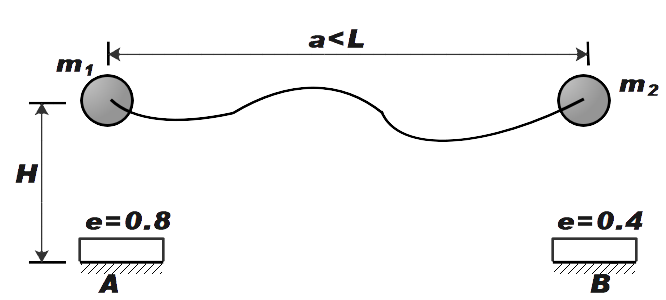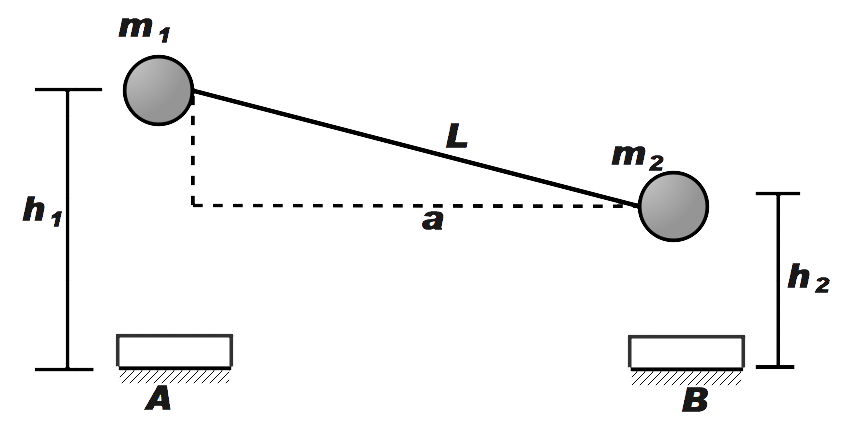Question
Question: Two masses \[{{m}_{1}}\] and \[{{m}_{2}}\] are connected by a string of length L. They are held in h...
Two masses m1 and m2 are connected by a string of length L. They are held in horizontal plane at height H above two fixed heavy plates A and B made of different material placed on floor. Initially distance between two masses is a < L. When the masses are released, they make collisions with A and B with coefficients of restitution 0.8 and 0.4 respectively. The time after collision after string becomes tight is:

A. 252gHL2−a2
B. H2g
C. 232gHL2−a2
D. none of the above
Solution
In this question we have been asked to calculate the time after collision when the string will become tight. We know that both the masses after collision will have different velocity and will therefore gain different speeds vertically upwards after collision. This will stretch the string completely i.e. a = L. Therefore, we have to find time required for the same. We shall be using the equation of motion as we are dealing with the gravity, speed of particles and time.
Formula used:
s=ut+21t2
Complete answer:
To solve this question,
Let us assume that the mass m1 attains a height h1 after collision and m2 attains height h2 as shown in the figure below.

Now, we know that coefficient of restitution is given as ratio of final to initial velocity between two objects after they collide.
Therefore, we can say that
Velocity of mass m1 is given by 0.8vand mass m2 is given by 0.4v
Therefore, we can now say that m1 and m2 will attain height as shown in the figure.
Now from the figure,
We can say that
h1−h2=L2−a2 …………… (Pythagoras theorem) …………. (1)
From equation of motion
s=ut+21t2
For mass m1, we know that s = h1, u = 0.8v
Therefore,
We get,
h1=0.8v×t−21gt2 ……………. (2)
Similarly, for mass m2
We get,
h2=0.4v×t−21gt2 ……………….. (3)
Now from (1), (2) and (3)
We get,
L2−a2=0.4v×t
Therefore, solving for time
We get,
t=0.4vL2−a2
Now, from potential energy theorem,
We know that
v=2gH
Also, we can say that,
0.4=104=52
Therefore,
We can say that,
t=252gHL2−a2
So, the correct answer is “Option A”.
Note:
Coefficient of restitution usually denoted by e determines whether a collision is elastic or inelastic in nature. During a collision, after the collision the kinetic energy would get transferred to the other object. The coefficient of restitution largely depends on the material of the surface or solid on which the object collides. It also depends on the shape and size of the colliding particle as well as impact velocity.
